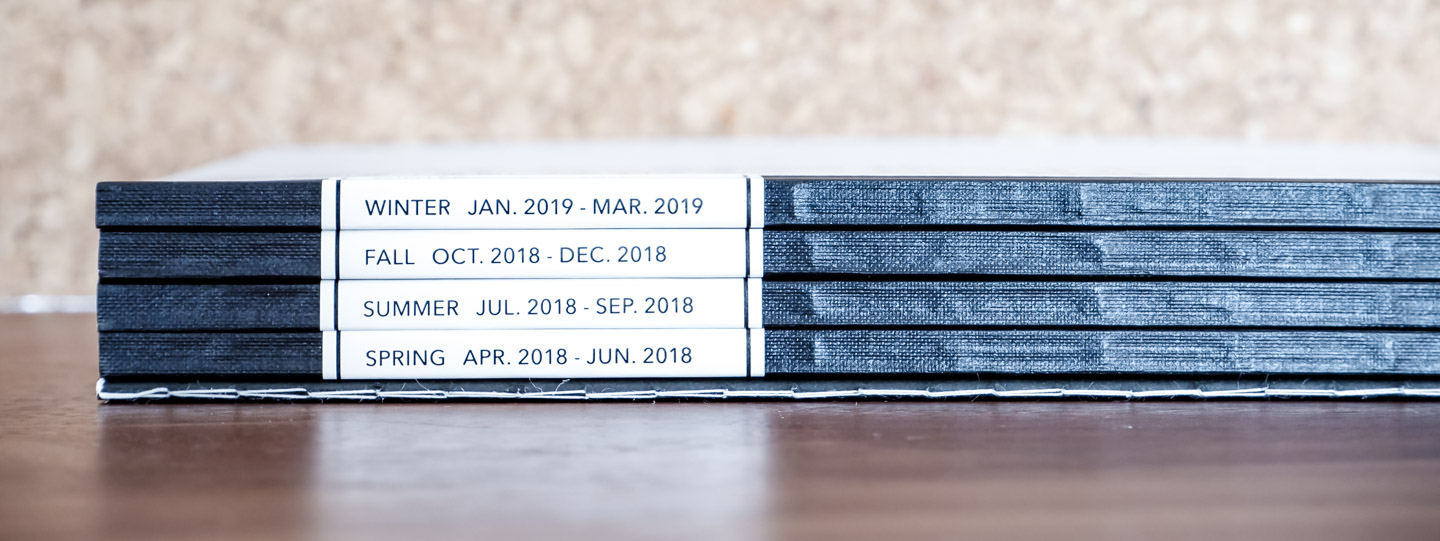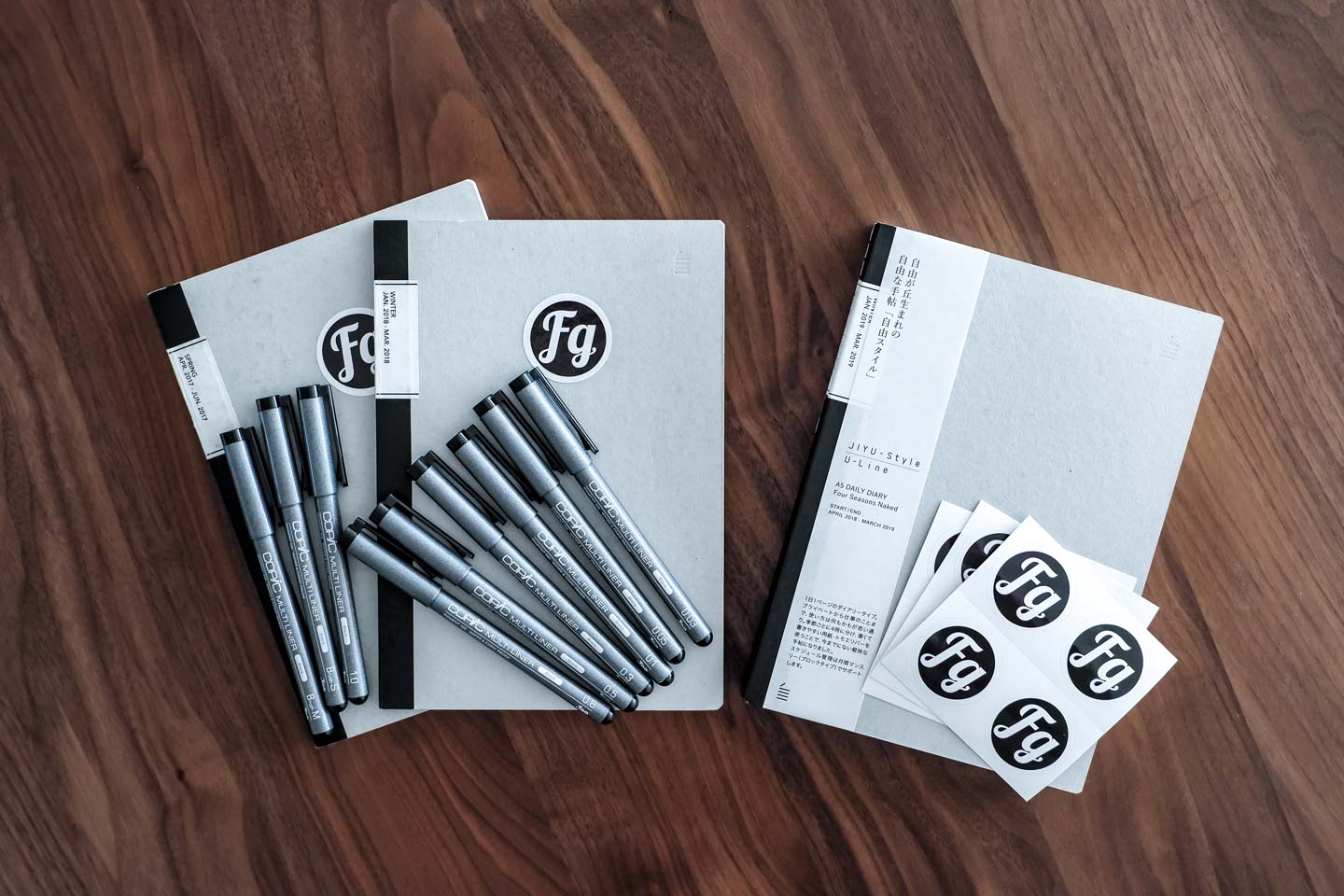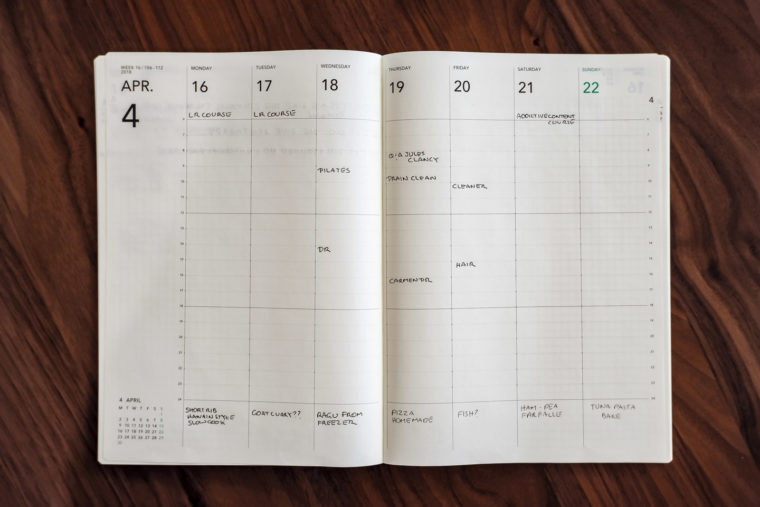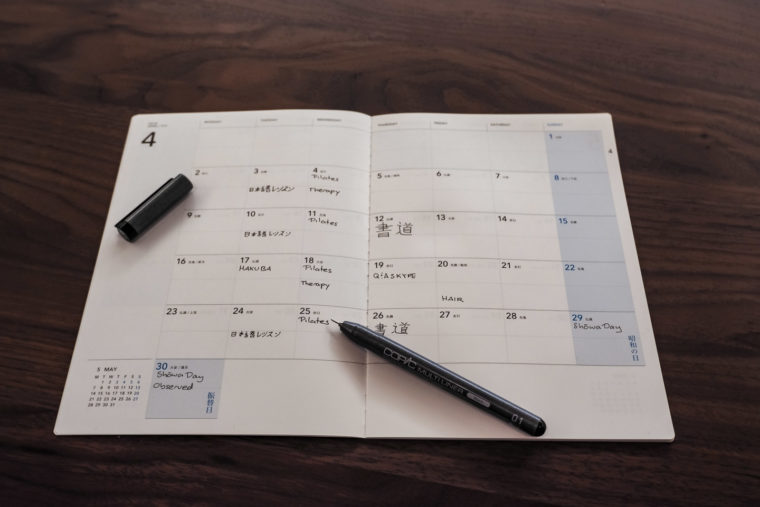Why I Went Back To Paper Planning
Calendar and diary apps are great. But, increasingly, I rely on paper as the best technology for planning my life and work.
Although computers were part of my life from an early age, they didn’t always come with the tools for planning and organising your life: reliable calendar apps didn’t come till later. So, I went through my school years and started my working life using paper planners, diaries and calendars. However, I abandoned those by the late 90s, with a technology-embracing mix of hope and joy. As notebook computers became cheaper and more popular, followed by devices like the palm pilot and, later, the earliest smartphones, it seemed like carrying a big paper diary or planner would become a thing of the past.
So, why have I gone back to using paper to plan out my days? The answer is simple: it is, in so many ways, the best technology.
Living in Japan Made Me Ask the Question
There’s a popular view that Japan, and Tokyo in particular, are some kind of futuristic dream world. As if walking through the streets of Tokyo is like being transported into some alternate sci-fi reality, such as Blade Runner.
Maybe it felt like that 30 years ago.
While there is plenty of Japan-only innovations here, Tokyo doesn’t feel anymore high tech than a lot of other modern Asian cities. If anything, the persistence of older technology, from commonly using fax machines to cassette tapes in local convenience stores, along with the aisles of CDs in music stores, makes it feel less like a sci-fi fan’s fantasy and more like a place less prone to embracing the new because, simply, it is new.
Go to any stationary or office supply store and you see something you might not see in many other countries, shelves upon shelves of personal planners, paper diaries and calendars – not just at new year and not just as a novelty.
At first, I would wonder, why, in a country that’s so synonymous with technological advancement, was this old-school approach to planning and managing time still so popular?
Paper as a Technology
We’re intoxicated with the idea that the solution to life’s problems is technology. But, we seldom stop to ask what we mean by technology. A question which I had upon first reading William Power’s book, Hamlet’s Blackberry, where Powers suggested the surprisingly novel idea that we think of paper as a technology. After all, it was new once: it was once a solution to exiting problems and a replacement for old ways of recoding information. The evolution of paper as a material and the marking of paper—from pens, to hand printing, to industrialised print—is as much as anything we might say about computers and the internet, it’s a story of technology changing the way we live and work.
So, the proper technological question doesn’t regard itself with what shiny new device or app is the best solution for your problem. Rather, it asks which technology—from a range of technologies, of which paper and pen might be one of the options—is the best solution.
Paper is a technology. So, the opposites aren’t paper and technology: it’s paper and computers. And, both are technologies with pros and cons to consider.
An extreme example of this is found in the planner and diary aisles of many Japanese office and stationary stores. In amongst the 12-month, 18-month, three-year, ten-year, school, work, domestic-life and gardening planners are the end-of-life planners. These, often detailed diaries, look, at first, like a standard planner, but the categories and sections are specifically tailored to someone “getting their affairs in order”. From sections for funeral arrangements to mapping out banking, legal and investment details, there is even space for life lessons and memorable moments.
It stops you with shock, but it also feels apt. In stark contrast to many western countries, you realise that older people, seniors and pensioners are to adapt to digital technology to manage their banking, social security and other personal matters.
Having Technology that Respects Seasonality
When most digital experiences play out now, we just scroll infinitely through a bottomless page. Digital calendars increasingly give us the same design.
But, life is not an infinite scroll. Life has seasons, beginnings and endings, and we choose to mark those with rituals, ceremonies, birthdays anniversaries and other commemorations.
It’s perhaps no wonder that we suffer so much in heart and mind, when the technology we rely on disconnects us from the natural rhythms of life – rhythms which ought to slow us down us and invite us to connect with the people and places around us, and reflect on what our lives mean.
How I Plan My Working Year or the Rule of 1+4×3
Last year, I reconfigured my business here in Japan, part of moving away from freelance work. To help with this, I did the Tara Gentile’s Goal-Setting and Planning course on Creative Live. Courses, like this, can be a great substitute, if you don’t have a collaborator or coach to help push you to dig a little deeper.
One insight from the course is something I’ve taken to calling the Rule of 1+4×3. Gentile’s suggestion is to give your business one big goal for the year (the 1), something that will organise and give a sense of mission to everything you do. Then, pick 3-5 projects per quarter (the 4×3) that will help you achieve that goal.
And, yes, 1+4×3 equals 13: don’t think about that, the metaphor is not that precise.
What it did for me last year was actually limit, in a fairly radical way, the number of projects I undertook. It also gave me one of the best years I’ve had in a long time, when it comes to actually getting shit done!
The planner I chose for the year, which I started using when I was doing the course, is the U-Line Four Seasons from Jiyu-Style. Rather than one notebook for the year, it come as four seasonal books.

In each quarterly book, you get the quarter laid out in both weeks and days. The week spreads out over two pages, and this gives an instant glimpse of the week. No matter the app or programme, I’ve always felt like it’s a struggle to get a digital calendar to look anywhere near as good as a well laid out paper one. In a way, digital calendars feel dumb – having to click, then tell it what I want, how long, etc.
Aiming a pen at paper is still the most intuitive technology I know of for this task.
The layout also gives me one-page per day. This is a stark contrast to digital apps where you can just keep adding things to your to-do list forever. One page is like a natural barrier to over committing yourself. There’s something about having to write down what you plan to do in a day that suddenly makes you ask, “can I really get through all this?” Virtual to-do lists are so weightless: it’s easy to create lists that are so long and so full of challenging actions and projects, and it might take several lifetimes to do them all well.
There’s also something wonderfully satisfying in looking at a full page at the end of the day, reflecting on what got done, deciding what to transfer to another day or what to approach differently in the future, without an infinite ghost of commitments looming in some digital cupboard.
I still use iCal for appointments at outside locations. Having a Google Maps link, together with the contact details for the person I’m meeting, embedded in the calendar is very helpful. For this, digital is a better technology.
But, for running my day, for keeping track of how well I’m doing and where plans need to be adjusted and for reflecting on how it all went and where I want to go tomorrow, paper is best.
The Simple Conclusion
Adding a paper planner to my life, initially, felt like an inconvenience. One more thing to worry about and carry around. But, I can jot things down on paper far easier than on an iPhone, without having to worry about how much battery I have left. I can easily see my week at a glance, or transfer things I didn’t finish today to tomorrow.
It’s an addition that simplifies and calms, it doesn’t invite distraction or allow me to overcommit by adding too many things to my schedule. I wish I’d made this change sooner.








